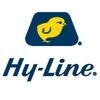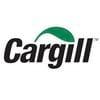Potential and Metabolic Impacts of Double Enrichments of Docosahexaenoic Acid and 25-Hydroxy Vitamin D3 in Tissues of Broiler Chickens
Published: September 29, 2025
Source : Sahil Kalia, Andrew D. Magnuson, Tao Sun, Ziqiao Sun, Xin Gen Lei / Department of Animal Science, Cornell University, Ithaca, NY, United States.
Background
Chicken may be enriched with 25-hydroxy D3 [25(OH)D3] and docosahexaenoic acid (DHA) to enhance the public's dietary intake.
Objectives
Two experiments (Expt.) were conducted to determine the potential and metabolic impacts of enriching both DHA and 25(OH)D3 in the tissues of broiler chickens.
Methods
In Expt. 1, 144 chicks (6 cages/treatment and 6 birds/cage) were fed a corn–soybean meal basal diet (BD), BD + 10,000 IU 25(OH)D3/kg [BD + 25(OH)D3], BD + 1% DHA-rich Aurantiochytrium (1.2 g DHA/kg; BD + DHA), or BD + 25(OH)D3+DHA for 6 wk. In Expt. 2, 180 chicks were fed the BD, BD + DHA-rich microalgal oil (1.5–3.0 g DHA/kg, BD + DHA), BD + DHA + eicosapentaenoic acid (EPA)-rich microalgae (0.3–0.6 g EPA/kg, BD + DHA + EPA), BD + DHA + 25(OH)D3 [6000 to 12,000 IU/kg diet; BD + DHA + 25(OH)D3], and BD + DHA + EPA + 25(OH)D3 for 6 wk.
Results
Supranutrition of these 2 nutrients resulted in 57–62 mg DHA and 1.9–3.3 μg of 25(OH)D3/100 g of breast or thigh muscles. The DHA enrichment was independent of dietary EPA or 25(OH)D3, but that of 25(OH)D3 in the liver was decreased (68%, P < 0.05) by dietary DHA in Expt. 1. Compared with BD, BD + 25(OH)D3 enhanced (P < 0.05) gene expression related to D3 absorption (scavenger receptor class B type 1 and Niemann-pick c1 like 1) in the liver and D3 degradation (cytochrome P450 24A1) in the breast, and decreased mRNA or protein concentrations of vitamin D binding protein in the adipose tissue or thigh muscle. Supranutrition of DHA decreased mRNA concentrations of lipid metabolism-related genes (fatty acid desaturase 1,2, ELOVL fatty acid elongase 5, fatty acid desaturase 2, fatty acid synthase, and sterol regulatory element-binding protein 1).
Conclusions
Both DHA and 25(OH)D3 were enriched in the muscles up to meeting 50%–100% of the suggested intakes of these nutrients by consuming 2 servings of 100 g of fortified chicken. The enrichments altered gene expression related to lipid biosynthesis and vitamin D transport or storage.
Abstract published in The Journal of Nutrition, Volume 154, Issue 11, November 2024, Pages 3312-3322. https://doi.org/10.1016/j.tjnut.2024.09.022.
Related topics:
Mentioned in this news release:
Recommend
Comment
Share

Would you like to discuss another topic? Create a new post to engage with experts in the community.












